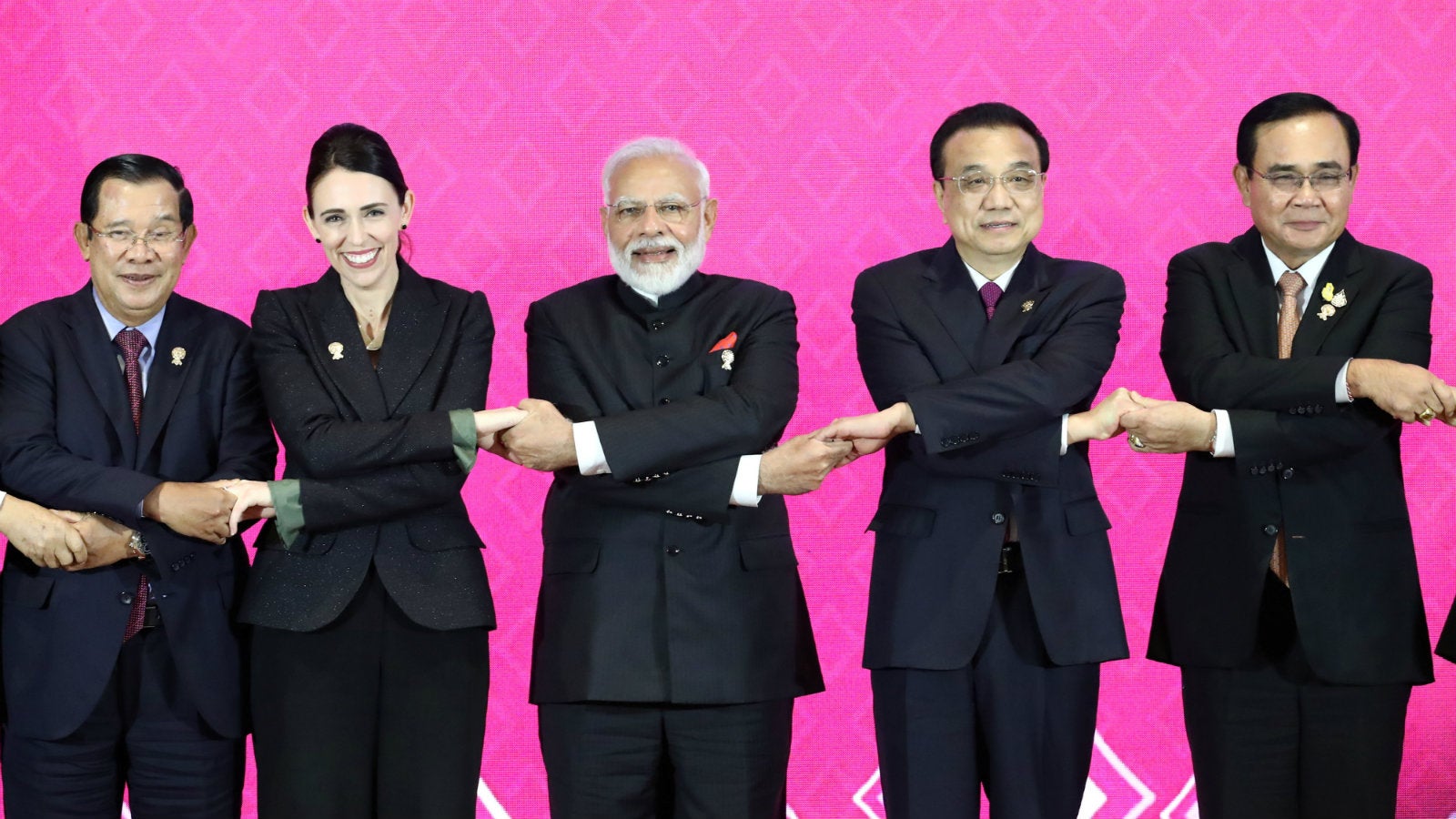India’s RCEP walkout shows its industry is still incompetent
If prime minister Narendra Modi hadn’t thrown a last-minute spanner in the works, the world’s biggest cross-border trade pact would have been inked by now.


If prime minister Narendra Modi hadn’t thrown a last-minute spanner in the works, the world’s biggest cross-border trade pact would have been inked by now.
The Regional Comprehensive Economic Partnership (RCEP), from which India pulled out earlier this month, proposed to create a common trade block comprising 10 ASEAN nations along with China, Australia, New Zealand, Japan, South Korea, and Japan. India bolted at the prospect of cheap Chinese goods and dairy products from Australia flooding its market, citing the interests of its farmers and small businesses.
While globalisation does have its limits, it is indisputable that international trade is an engine of growth. The policy of protectionism and isolationism in the three decades following India’s Independence only created a low-growth economy. India’s integration with the global economy, in the 1990s, benefitted it hugely. The IT and pharmaceutical sectors exemplify the benefits of global integration and liberal trade.
Disassociating with the RCEP can only reverse these gains.
The decision to pull out of the pact was surprising also because Modi had so far touted an “Act East” foreign policy, focussing on greater economic ties with the Asia-Pacific region, which includes ASEAN.
“When I measure the RCEP agreement with respect to the interests of Indians, I do not get a positive answer. Therefore, neither the talisman of Gandhiji nor my own conscience permits me to join RCEP,” Modi had said on Nov. 4 at the RCEP summit in Bangkok.
The remaining 15 nations have stated they are ready to go ahead and sign the deal in 2020. But what made the RCEP pact so unpalatable to the Modi government?
Common market
Negotiations on RCEP began in 2012 with the goal of creating an integrated market spanning 16 countries. The free trade agreement (FTA) was meant to make it easier for products and services of each country to move freely across this region.
The 16 nations, including India, would have accounted for over 3 billion people, or 45% of the world’s population, a combined GDP of about $21.3 trillion, and about 40% of world trade.
The RCEP aimed at providing “a framework aimed at lowering trade barriers and securing improved market access for goods and services.”
Such a large treaty was obviously fraught with some dangers.
- Swamped by imports: India’s trade deficit with the RCEP members is large and rising; it rose from $7 billion in 2004 to $105 billion in 2019. It is feared that further liberalisation would lead to much larger imports and worsen the trade deficit. Given the current slowdown in the Indian economy and worsening macros, it has been argued that joining the RCEP would be a disaster for the economy.
- China factor: Of the $105 billion trade deficit India has with RCEP members, $54 billion is with China. The Asian giant, which has emerged as the factory of the world, has the potential to produce a variety of goods at incredibly low prices. With RCEP, it is feared, China will further swamp India with cheap manufactured products, thereby impacting Indian manufacturing.
- Threat to “Make in India”: Cheap imports under RCEP would undermine the Modi government’s “Make in India” programme. The government doesn’t want to be seen working against its own flagship scheme. It has also been alleged that India’s protectionist lobby has been active in scuttling the deal.
- The dairy challenge: The dairy sector is a major source of jobs and livelihood for 70 million Indian farming households. Small-scale dairy farming is a way of life in India, while it is a largely automated industry in dairy superpowers like New Zealand and Australia. India fears that cheap imports of milk and dairy products from there would destroy farmers’ livelihoods.
- Technical objections: India has cited technical factors like the base year for calculating tariffs and the principle of “country of origin” as important factors of disagreement.
Commerce minister Piyush Goyal summed up the sentiments. “India has maintained that we will not be a signatory to the RCEP unless our domestic concerns have been addressed,” he reportedly told the ruling Bharatiya Janata Party’s (BJP’s) parliamentarians, on Nov. 20.
The real issues
Most objections, though, are mere camouflage.
The real issue may be that India is not competitive enough. India is finding it difficult to match the prices and quality of products from our global competitors. The important constraints are rigidities in the country’s land and labour markets.
It is this uncompetitive factor that India needs to fix urgently, through structural reforms.
It is also quite probable that India is using its current stance as a bargaining ploy to extract more concessions from other RCEP members to arrive at a better deal. In fact, the country can do some hard negotiations to gain greater access to the Chinese market in sectors like IT and pharmaceuticals, where India has strengths.
Also, India can bargain hard for exclusion of some sensitive sectors, like dairy, and the gradual liberalisation of imports.
At a loss
Opting out of RCEP means India will have to rely on multiple bilateral trade agreements with other nations to ensure that its exporters have market access. These would not be easy to sign. There is not much of a scope for a favourable negotiation with the US and the European Union (EU). Therefore, walking out of an agreement like RCEP is certainly not the way to go.
If India permanently pulls out of RCEP, it would mean swimming against the current, which will leave its economy highly disadvantaged.
We welcome your comments at [email protected].